How to Find a Stud With a Magnet —for Drywall or Plaster Walls!
When decorating involves mounting heavy items like shelves and large frames, it’s always best to find a wall stud to secure it to. But if you don’t have a stud finder, or if your walls are lath and plaster, finding a stud can be difficult. That is, until you learn this simple hack for finding a wall stud behind drywall or plaster! Read on to learn how to find a stud with a magnet.
The Construction of a Wall
Before we go looking for a wall stud, it’s good to know a bit about how a wall is constructed. ‘Framing’ is when we arrange dimensional lumber to form walls or other elements of a building’s structure. We space vertical 2×4 studs 16″ apart, and arrange them between horizontally running lumber at the top and bottom.
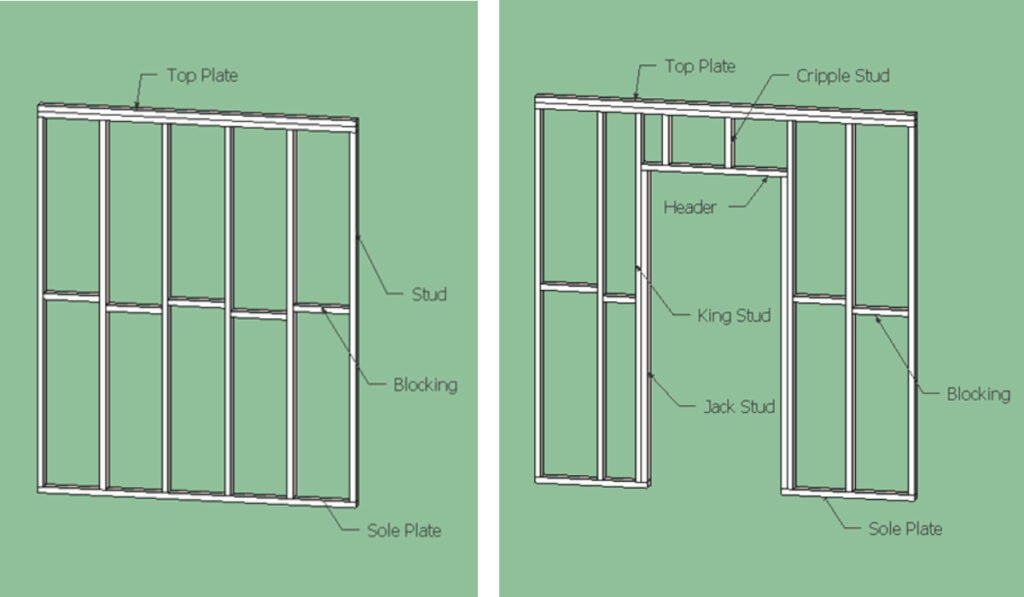
Because we don’t build walls perfectly divisible by 16 inches, studs might be closer together near the end of a stretch of wall or near an opening of a door or window. Builders also add additional studs around windows and doors for structural support.
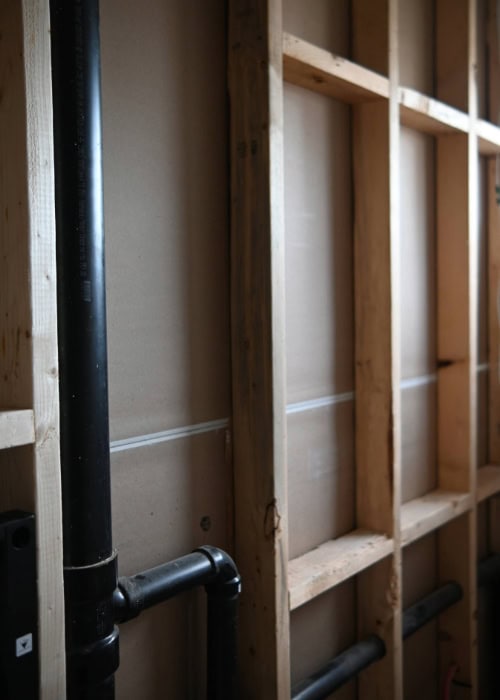
The framing creates a rigid skeleton that supports wall finishes like drywall or lath and plaster.
Walls with Drywall
Drywall attaches to the framing with steel screws spaced out in a grid about 8-16 inches apart. The screw has a flat head driven just below the surface, with a few skims of drywall compound on top.
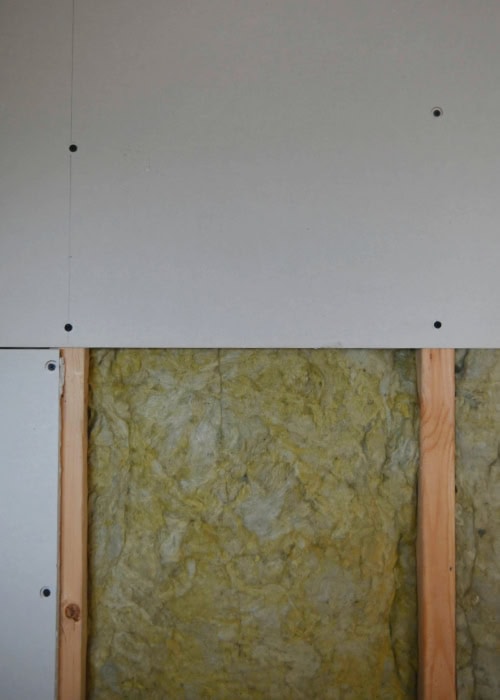
Walls with Lath and Plaster
Lath and plaster was a common way to finish a wall in houses build in the early 1900s. Lath is the term for the thin strips of wood nailed to the framing. The wood lath spanned the studs, providing a base for the plaster which was spread overtop as a wall finish.
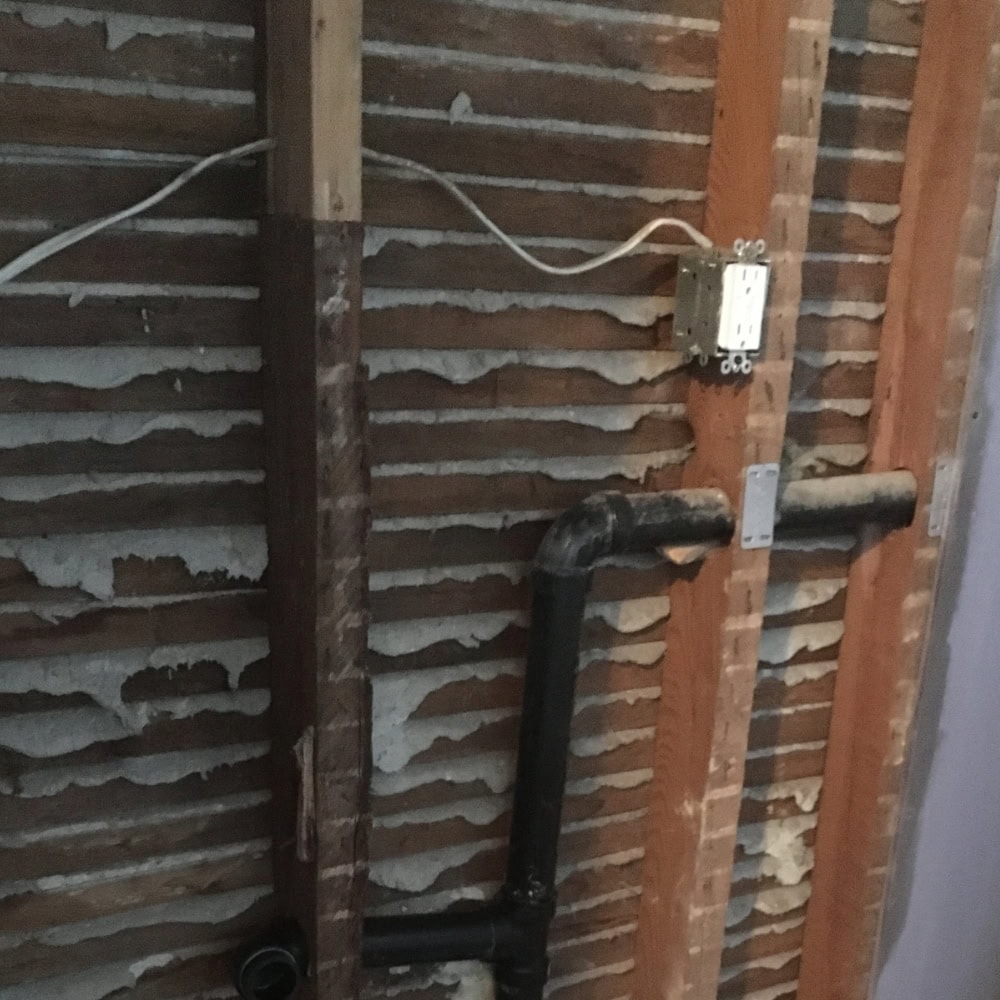
A view of lath and plaster from the inside of a wall. The lath was spaced far enough apart so plaster could squeeze through the gaps, creating plaster ‘keys’ that added strength.
Back in the early 1900s, when lath an plaster was commonly used, framing looked a bit different than it does today. Studs were a bit larger, measuring closer to 2”x4” than today’s 1.5”x 3.5” studs. They were also spaced slightly differently with more variation in spacing than today’s 16” on center studs.
Not All Walls Have Studs
But not all homes use stud framing. Exterior walls made of structural brick, concrete block, or poured concrete don’t utilize framing unless it’s been added to the inside of the wall to accommodate insulation. However, many brick and concrete houses still use stud framing for the interior walls that separate rooms.
So before you go looking for a stud, consider whether the wall in question is an exterior wall (the outer walls of the house) or an interior wall (walls that separate the rooms). If the wall is an exterior wall, consider what your house is built from before continuing. If you have an old brick home, chances are you will not have a wall stud in your exterior walls.
How to Find a Stud with a Magnet
Whether you have drywall or lath and plaster walls, metal fasteners are used. Both drywall screws and nails driven through the lath attached to the stud framing. So in theory, if you can find the nail or screw, you will find the stud.
Lucky for us, these fasteners are made from ferromagnetic metals! A magnet placed over the surface will pull towards the metal alloys in the wall, sticking to the surface. But here’s the thing: not just any souvenir magnet will do. Especially when it comes to lath and plaster where the plaster can be 3/4″ thick. The magnet will need to be strong!
The Best Magnets to Use
The most effective magnets for the job are not even that pricey. Rare earth magnets are available today for less than $1 per magnet. Here is the link to the magnets I used*.
*Links in this article may be affiliate links. This means that they help to support my site at no additional cost to you.
Here’s the trick to getting an incredibly strong magnet: Stacking them. When we stack rare earth magnets, it increases the magnetism. The more magnets we stack, the stronger it gets—up to a certain point. Once the height of magnet is the same size as its diameter, any additional magnets have little impact.
So, for a magnet that’s 5/8″ in diameter, a stack of 10 magnets that are each 1/16″ high should give it optimal strength.
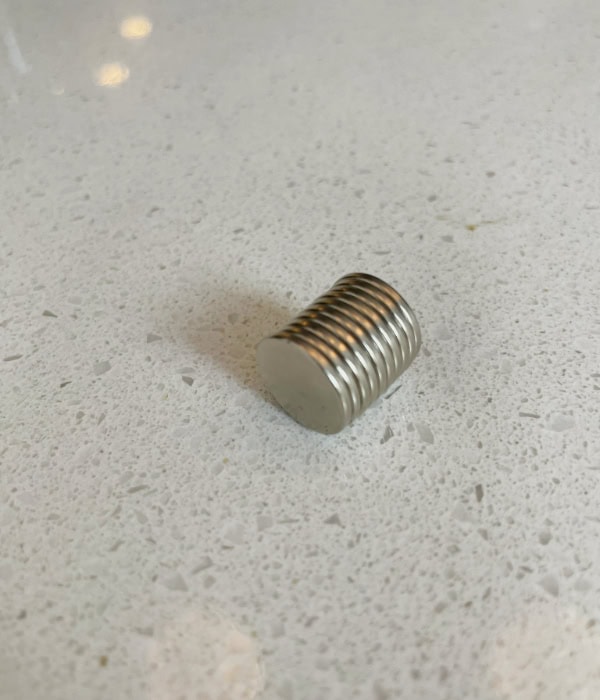
Stacking rare earth magnets makes them incredibly strong. I tried to take a picture of this stack facing sideways, but it kept turning to face North. You can literally use this thing as a compass.
Fun magnet science aside, it was time to put it to the test to find a wall stud. I tested it out on both drywall and lath and plaster walls in my home.
Finding a Stud in Drywall with a Magnet
A single Rare Earth magnet does a pretty good job of finding a screw in drywall. This is because the screws in drywall are just below the surface. Usually only a couple millimeters (1/16″) of plaster and a couple coats of paint separates you from the drywall screw.
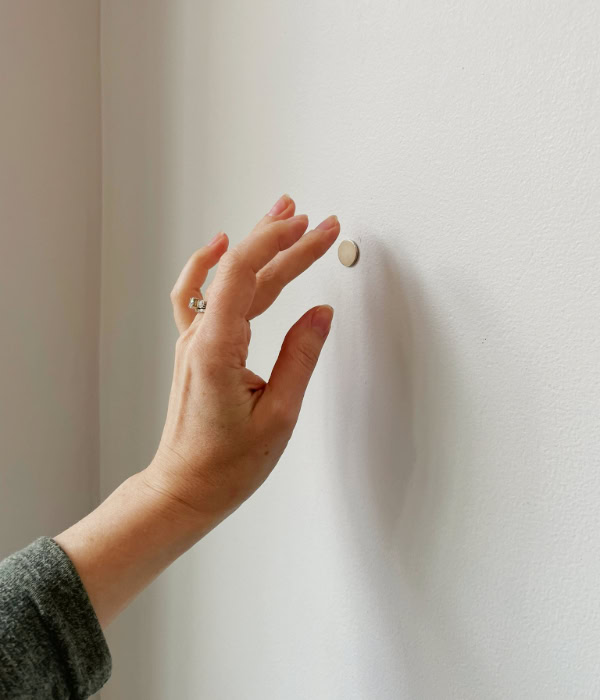
If you run a single magnet over drywall for long enough you are bound to detect some screws, indicating the likely location of a stud. But the magnetism isn’t always strong enough for you to detect when the magnet is pulling beneath your fingertips. Stacking additional magnets will change this, increasing the amount of screws you will be able to find.
Finding a Stud in Lath and Plaster with a Magnet
I used to think that it was impossible for a magnet to find a nail in lath and plaster. Unlike drywall, where a thin skim of plaster compound covers the screw head, the nail in the lath is covered by around 3/4″ of hard plaster. In addition to this, the nail heads are much smaller than a screw, making them harder to detect.
A single magnet is simply not strong enough, which is why others have said this method won’t work on paster. But with a stack of 10 magnets, I can attest that this does work, and it works well!
I tried this out on a small piece of lath and plaster on the way down to our basement. When the magnet stuck, I pried away some of the plaster to check. Sure enough, there was the stud!
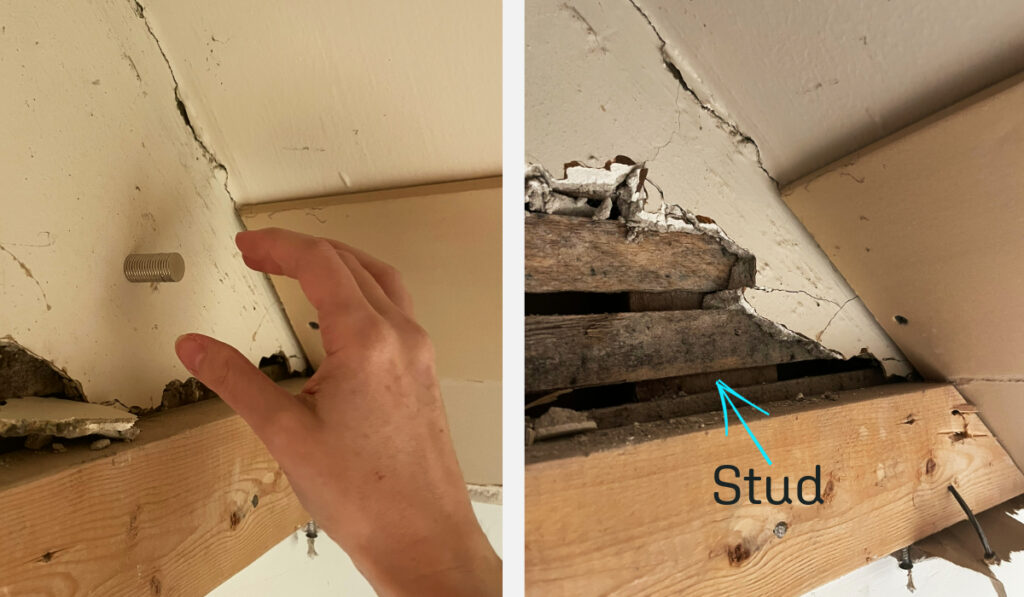
You can try this out on your own lath and plaster walls. Once you find one point of magnetism, run the magnet directly up and down from that spot to find more nails. Multiple sticking points in a line will confirm the presence of a stud.
Tips for Finding a Starting Point
While this method works, sometimes finding the first screw or nail can be a bit like finding a needle in a haystack. So if you’re struggling to get your magnet to stick to anything, you might need a few clues to help get you closer to where a stud might be.
Measuring From Another Stud
If you happen to know where one stud is, another one will not be far. Studs are usually spaced 16″ apart, so measuring away from a known stud in 16″ intervals can help you find another one. This method is less reliable in older homes where stud spacing was less regulated. But it might serve as a good starting point for your magnet search.
A Switch or Outlet
Another clue you can use as a starting point is an outlet or switch box. Electrical boxes must be mounted to a stud on one side. So it is a safe bet that if you have an outlet on the wall you wish to hang something, there will be a stud on one side of that outlet, which can then be used as a starting point.
Final Thoughts
You’ll never have trouble securing something to the wall when you learn how to find a stud with a magnet. Whether you’re looking for a stud behind drywall or lath and plaster, using a magnet can be quick and effective. The trick is using a very strong magnet—especially when it comes to lath and plaster. Simply stack multiple rare earth magnets together and you’ll have an extra strong magnet that can find a nail through 3/4″ plaster.
Finding a wall stud does not need to be complicated. With a small stack of magnets, it has actually never been easier!







